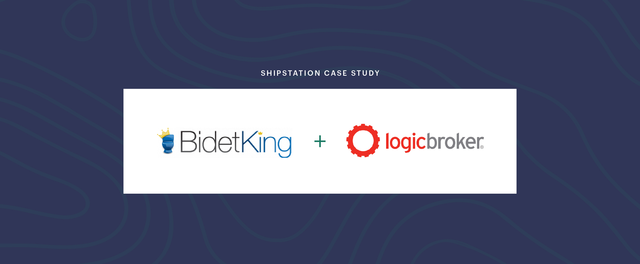How Lioness Fashion increased dispatch speed by 50% with ShipStation
THE CHALLENGE
Following the ecommerce boom, Lioness' business was booming. Keeping up with demand felt impossible.
THE SOLUTION
After implementing ShipStation, Lioness is growing faster than ever, and their fulfillment speed is able to keep up as they expand.
RESULTS
increase in dispatch speed
improvement in processing speed
decrease in manual errors
Australian online retailer Lioness has fast become a fashion force. Founded by Wendy Lin in 2010 as a wholesale business, the label made its foray into ecommerce in 2014. According to Brian Nguyen, director at Lioness, the label has significantly ramped up its direct-to-consumer business over the past three years.
“We started as a wholesaler and then became a branded wholesaler. So when the ecommerce boom happened, we already had an established brand identity and were well positioned to ride that wave,” said Brian.
Lioness has continued to ride the wave of online success, with the label garnering a host of fans among local and international celebrities and influencers.
The brand is stocked in more than 12 countries worldwide and more than 1000 stores nationally in Australia. Some of its key clients include David Jones, Shopbop, The Iconic, Urban Outfitters, and ASOS.
“We still do a lot of wholesale business, but in the last two to three years we have focused on ecommerce in a very serious way. We have a dedicated ecommerce coordinator and customer service, fulfilment, and picking and packing is now a separate workstream to the wholesale function.”
The Need for Speed
To keep up with increasing customer demand, Lioness also needed a new shipping solution that could automate the fulfilment process and improve delivery speed.
Lioness implemented ShipStation in January 2020 after Brian was referred to the platform by the brand’s digital agency, Elephant Room.
“Our online pathway was wholesale, to ecommerce, and direct to consumer. We were initially set up one way. We were receiving cartons of [product] that we were then QCing and sending out.
“When we first started direct-to-consumer ecommerce, we were using a WordPress ecommerce site and using direct plugins. But we began to realise that the systems for wholesale weren’t working in the same way for direct-to-consumer. We needed to be able to label quicker, pick quicker, pack quicker, and dispatch quicker.”
This realisation eventually led Lioness to ShipStation, but not before some trial-and-error.
“Our initial journey was with another shipping solution that integrated with our ecommerce WordPress site. That was functional and useful for a long period of time for us. But we started to find that with the way we wanted to sell to the consumer, especially being in fast fashion, we needed to be a bit more dynamic.
“We’re fast fashion, but we want to be faster than fast fashion. If customers want to buy on pre-order, how do you sell something that doesn’t exist yet?”
Feeling limited by its existing platform functions, it was the possibilities that ShipStation’s automation capabilities could offer not only Lioness, but its customers, that drove the company to the platform.
“Sometimes when you see demos of platforms there are aspects that are good, but you’re not entirely sure it’s for your business. But, looking at the ShipStation interface during our demo, I could tell that it would be able to do what we needed in terms of flexibility.”
Automation for Even Faster Fashion
ShipStation’s customisable automation rules and order tags have been the most impactful features for Lioness due to the brand’s high volume of pre-orders.
Automation Rules
ShipStation’s automation rules allow retailers to apply specific rules to a set of orders that meet a certain criterion. According to Brian, ShipStation’s automation rules have helped the label manage pre-orders in a “sensible and logical” way. ShipStation has also integrated seamlessly with Shopify Plus.
Order Tags
Order tags can be used in numerous combinations to help accomplish specific tasks and make the shipping process as efficient as possible.
Lioness has set up tags to ensure pre-orders items are not released in the order queue until their arrival date.
“For us, at any given time we have 40 styles in a range. For those 40 styles, we will have between five to seven [size] variants within that range. That’s 280 SKUs at any given time. We might pre-order one size of one style, or we might have a mixture of 10 different SKUs on pre-order arriving at different dates, with different quantities of orders and volumes.
“It would be impossible to manage [inventory] without leveraging automation and tagging. Without tags, we wouldn’t be able to prioritise orders according to the arrival date or the date that the customer placed the order, but with ShipStation we can do that seamlessly.
“For example, if a customer pre-orders an item that is going to arrive on the 10th of October, using ShipStation we tag the order as ‘10/10’. Using the automation rules, that order won’t be released into the queue until 10/10. On the scheduled arrival date, the order is placed on the top of the queue. The customer then receives their communication with same-day tracking.”
Improved efficiency and accuracy
Since implementing ShipStation, Lioness has:
- Increased dispatch speed by 50%
- Improved processing speed by 50%
- Reduced manual labour by 30%
- Decreased manual errors by 85%
In addition, ShipStation’s batch shipping and scan-to-verify tools have also helped Lioness streamline its processes.
Batch Shipping
Lioness has utilised ShipStation’s batch shipping function to help organise multiple shipments into customised groups.
“It is easy to batch orders by specific properties or parameters. For example, our main customer is Australian, but we also have a growing market in the US. Using batch shipping, we’re able to prioritise Australian and US customers to make sure they’re being serviced as a priority.”
Batch shipping has also assisted with the intricacies of international orders, such as the European Union’s new customs changes, which took effect earlier this year.
“Since Brexit and the EU’s ICS2, we now batch those orders differently because of the specific requirements needed.”
But it seems that it’s only the beginning for Lioness when it comes to utilising ShipStation’s automation rules. The company is looking to further develop the function to create a more personalised shopping experience.
“We’re starting to build in extra tags like lifetime spends and repeat customers so that we can prioritise loyalty,” explains Brian.
Scan-to-Verify
The scan-to-verify feature has helped reduce manual errors during Lioness’ peak cycles.
Scan-to-verify allows retailers to scan a UPC or SKU barcode to confirm the picker has the right items to pack.
“We had an error rate of around 5% of orders during busy periods, like Christmas. But scan to verify eliminates the ability to send the wrong order or place the wrong label on the wrong parcel,” said Brian.
Ready for disruption
Implementing ShipStation has helped set the company up to continue to serve customers throughout COVID-19 disruptions.
Brian credits ShipStation’s automation rules for helping the company navigate through supplier delays, resulting in extended pre-order wait times last year.
It’s this function that he anticipates will also help the team through this year’s peak season.
“When COVID first hit [Australia], online sales went crazy for the entire industry. As a result, there was more demand but supply chain issues. We were able to deal with the demand side, but suddenly our pre-order time frames went from two weeks to sometimes up to four to six weeks.
“We used our website, EDMs and customer service channels to communicate with customers about delays. From an operational side, ShipStation allowed us to simply adjust the automation rules, change the arrival dates, and keep the pre-orders out of the queue.”
“That simple adjustment meant we weren’t chasing our tails with a huge stream of orders or printing a whole bunch of packaging slips that shouldn’t have been there. The tags keep the pre-orders out of our queue and we only needed to focus on them once it was their arrival date.
“The integration of Shopify Plus and ShipStation ensured that our customers, during that peak demand cycle, still received a high level of service despite the blowouts that were out of our control.”
Tech for purpose, not for tech’s sake
When it comes to selecting a shipping solution, Brian advises retailers to look inward before looking outward.
“Go explore the market in terms of who the different software providers are and get demos. But before that, understand what your business’ needs and requirements are so that you can find the right partner to work with.
“Tech is always going to be the answer, but you need to have your own house in order to understand what you’re trying to achieve. What we were trying to achieve was pre-order selling in a sensible way, which is why ShipStation was the solution for us.
“I remember sitting in that demo and when the team got to the ordering automation and tags, I was like, ‘Hey, can you stop there?’ You have to know what you need. It’s not on the [service provider] to know what you need.”
A customer-first future
Developing an efficient shipping process has allowed Lioness to focus on growth and scalability, with the fashion label planning to turn its attention to US expansion over the next 12 months.
“Our aim is to target and service customers in the US a lot better. We have a lot of organic growth there, and we want to be able to speak to them more in terms of seasonality.”
And, while the new shipping strategy through ShipStation has played an important role in improving the overall customer experience, there’s still more work to be done.
Brian says that the time the company once spent on shipping, he would now like to see invested into creating a more tailored path to purchase for the customer.
“Once a customer places an order, ShipStation looks after them. But, before they get to the checkout, I’d love to do a lot more with them in terms of engagement.
“Fast fashion is our category, but we have a lot of repeat customers who love our brand and love the way we style, and we want to service them better.
“When you grow it’s sometimes hard to remember who your original customer was. We love our customers, and we have a huge audience now, so we want to focus on how to better engage with them.”
Follow Lioness on their Instagram or support them at www.lionessfashion.com. You can also sign up for a free trial with ShipStation.





